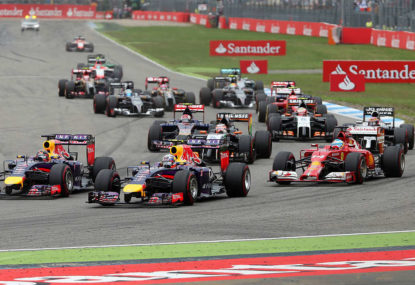Chinese Grand Prix talking points: Stroll has become the most hated F1 driver in a long time - but that's simply an unfair call!
The absolute vitriol against the Canadian that has come from the incident is beyond reprehensible.

Viewers of the German Formula One Grand Prix last weekend were shocked at the lack of a safety car intervention in two dangerous situations.
Marshals were forced to run across the track during the race to clear Adrian Sutil’s stranded Sauber, while a few laps earlier safety crews had to put out a fire that had ignited Daniil Kvyat’s Toro Rosso.
Both incidents required urgent marshal intervention, yet with no safety car to assist the recoveries – a departure from recent years where the race director wouldn’t have hesitated to neutralise the race in the name of safety.
For a governing body so preoccupied with road safety and minimising risks, why were marshals forced to run across the road as the race continued? As Lewis Hamilton rightly pointed out post-race, marshals have been seriously injured and killed when forced onto the track when cars are at speed.
The decision not to call the safety car could be read in two ways.
Firstly, maybe it was a sneaky way to protect local Nico Rosberg’s lead. With crowds plummeting at the German event, a German driver winning in a Mercedes-Benz could be a much-needed boost.
Secondly, race organisers could be preparing for next season, where safety car periods will be followed by standing race restarts from the grid.
Under such a rule, there will be a need to minimise safety cars to only essential interventions, given the time factor associated in a new starting procedure.
Either way, unnecessary risks were made in Germany; not only to drivers but the volunteer marshals who make motorsport events possible.
Further to the safety aspect, Formula One continues to miss the entertainment value of a safety car, which can always bring a race to life by closing up the pack.
Sure, we don’t want to see Formula One go down the NASCAR route, whereby safety cars are randomly used to contract the field; ‘competition cautions’ are common and artificial. But if the safety car is needed so marshals can do their work in a safe manner without the risk of a speeding car coming around the corner, then it can also increase entertainment value.
Rosberg would have come under pressure from the battling Valtteri Bottas and Lewis Hamilton, and further back Daniel Ricciardo and Fernando Alonso in the final stages of the German race.
With varying levels of tyre degradation and the running order in close proximity, we were robbed of an even better spectacle. And the point that again needs to be stressed is that it was a necessity given the safety aspect.
If we consider that the standing race restarts following safety car periods are being introduced from an entertainment standpoint, where was the willingness to spice up the German Grand Prix with a justified safety car intervention?
There are some worrying mixed messages coming from Formula One at the moment.